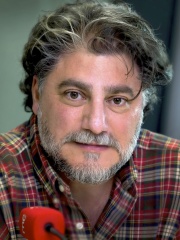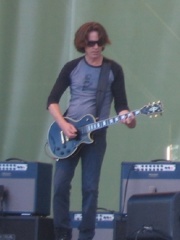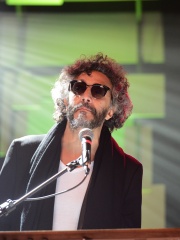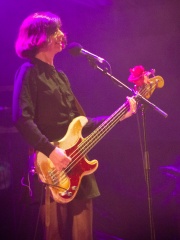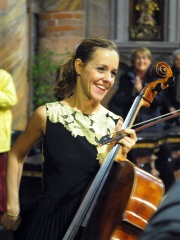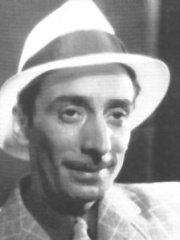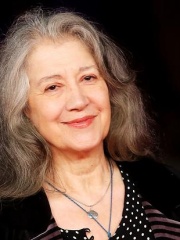
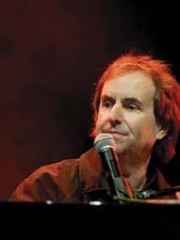
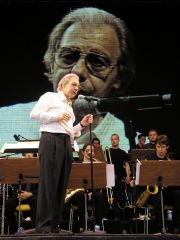
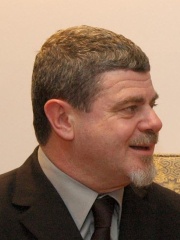
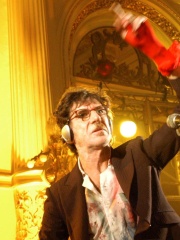
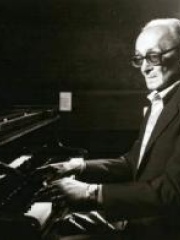
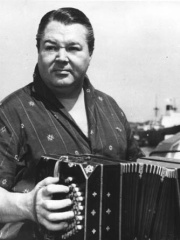
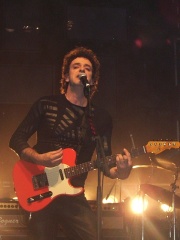
The Most Famous
MUSICIANS from Argentina
This page contains a list of the greatest Argentinean Musicians. The pantheon dataset contains 3,175 Musicians, 16 of which were born in Argentina. This makes Argentina the birth place of the 26th most number of Musicians behind South Korea, and Denmark.
Top 10
The following people are considered by Pantheon to be the top 10 most legendary Argentinean Musicians of all time. This list of famous Argentinean Musicians is sorted by HPI (Historical Popularity Index), a metric that aggregates information on a biography's online popularity. Visit the rankings page to view the entire list of Argentinean Musicians.

1. Martha Argerich (b. 1941)
With an HPI of 74.49, Martha Argerich is the most famous Argentinean Musician. Her biography has been translated into 50 different languages on wikipedia.
Martha Argerich (Argentinian Spanish pronunciation: [ˈmaɾta aɾxeˈɾitʃ]; Eastern Catalan: [əɾʒəˈɾik]; born 5 June 1941) is an Argentine classical concert pianist. Argerich is noted especially for her interpretations of the works by composers such as Chopin, Ravel, Liszt, Prokofiev, and Schumann, and is generally regarded as one the greatest living pianists. Born and raised in Buenos Aires, Argerich gave her debut concert at the age of eight before receiving further piano training in Europe. At sixteen, she won both the Geneva International Music Competition and the Ferruccio Busoni International Competition, and er international career was launched after winning he International Chopin Piano Competition in 1965. Since the 1980s, she has prioritized collaborative performance, appearing frequently with artists including Nelson Freire, Mischa Maisky, and Gidon Kremer.

2. Chris de Burgh (b. 1948)
With an HPI of 67.30, Chris de Burgh is the 2nd most famous Argentinean Musician. His biography has been translated into 38 different languages.
Christopher John Davison (born 15 October 1948), known professionally as Chris de Burgh (English: də-BER), is an Irish singer-songwriter and musician born in Argentina. He started out as an art rock performer and progressed to writing more pop-oriented material. He has had several top 40 hit singles in the UK and two in the US. He is more popular in other countries, particularly Norway and Brazil. His 1975 "A Spaceman Came Travelling" became a popular Christmas song and his 1986 love song "The Lady in Red" reached number one in several countries. De Burgh has sold over 45 million albums worldwide.

3. Lalo Schifrin (1932 - 2025)
With an HPI of 67.00, Lalo Schifrin is the 3rd most famous Argentinean Musician. His biography has been translated into 34 different languages.
Lalo Schifrin (Spanish pronunciation: [ˈlalo ˈʃifɾin]; born Boris Claudio Schifrin; June 21, 1932 – June 26, 2025) was an Argentine-American pianist, composer, arranger and conductor. He was best known for his large body of film and television scores, which incorporate jazz and Latin American musical elements alongside traditional orchestration. Schifrin's best known compositions include the themes from Mission: Impossible (1966) and Mannix (1967), as well as the scores to Cool Hand Luke (1967), Bullitt (1968), THX 1138 (1971), Enter the Dragon (1973), The Four Musketeers (1974), Voyage of the Damned (1976), The Eagle Has Landed (1976), The Amityville Horror (1979) and the Rush Hour trilogy (1998–2007). Schifrin was also noted for collaborations with Clint Eastwood from the late 1960s to the 1980s, particularly the Dirty Harry film series. He composed the Paramount Pictures fanfare used from 1976 to 2004. Schifrin was a five-time Grammy Award winner; he was nominated for six Academy Awards and four Emmy Awards. In 2019, he received an Honorary Academy Award from the Academy of Motion Picture Arts and Sciences in recognition of his successful career.

4. Gustavo Santaolalla (b. 1951)
With an HPI of 65.61, Gustavo Santaolalla is the 4th most famous Argentinean Musician. His biography has been translated into 35 different languages.
Gustavo Alfredo Santaolalla (Spanish: [ɡusˈtaβo alˈfɾeðo santaoˈlaʝa]; born 19 August 1951) is an Argentine composer, record producer and musician. He is the recipient of numerous accolades for his works, including two Academy Awards for Best Original Score, a Golden Globe, two Grammy Awards and 17 Latin Grammy Awards. He is known for his minimalist approach to composing and for his influence in the Latin rock music genre. Involved in music from a young age, he began a professional career in 1967 founding the band Arco Iris, who were influential to the rock nacional genre. Fleeing the rule of the Argentine military junta and the dictatorship of the National Reorganization Process, Santaolalla moved to Los Angeles in 1978. After returning to Argentina in the 1980s and taking a musical sabbatical, he became a leading figure in the rock en español movement, establishing the record label Surco Records within Universal Music and producing records for over 100 artists. Notable records he produced were several from Café Tacuba, including their acclaimed 1994 album Re, Julieta Venegas's 2000 album Bueninvento, and Juanes's 2005 hit single "La Camisa Negra". Santaolalla established the neotango group Bajofondo in 2001. Music from Santaolalla's 1998 solo album Ronroco caught the attention of filmmakers and led to a career expansion into film scores, beginning with Amores perros (2000), 21 Grams (2003) and The Motorcycle Diaries (2004). Santaolalla rose to fame for creating the scores for Brokeback Mountain (2005) and Babel (2006), for which he received two Academy Awards for Best Original Score in consecutive years. He scored I Come with the Rain (2009) and Biutiful (2010). Santaolalla further gained recognition for his work on The Last of Us game series, composing the 2013 game and its 2020 sequel. In 2014, he composed his first animated film, The Book of Life, and his first Argentine film, Wild Tales. He scored the short film Borrowed Time (2015) and co-composed the documentary Before the Flood (2016). Santaolalla returned to adapt his music for the 2023 The Last of Us TV series and composed an original score for October 2024 showings of the 1931 Spanish-language Dracula film by the Los Angeles Opera. Not learned in reading or writing musical notation, Santaolalla prefers composing his scores mostly by himself. Favouring instruments like the ronroco, he adopts a minimalistic approach when composing and prefers to capture humanistic elements of performances. He compares his philosophy of favouring minimalism in music to parkour, comparing the calculations of athletes before landing to his measured selection of musical notes before playing them. By contrast, his live performances have been noted for their vibrancy. For his influence in Latin music, Santaolalla was recognized as a BMI Icon during the 15th annual Latin Awards Ceremony in 2008 and received the Latin Grammy Trustees Award in 2023. In his personal life, he has two children with his wife, and is engaged with winemaking.
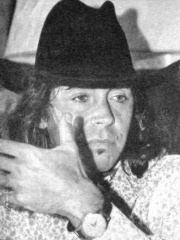
5. Gato Barbieri (1932 - 2016)
With an HPI of 63.07, Gato Barbieri is the 5th most famous Argentinean Musician. His biography has been translated into 25 different languages.
Leandro "Gato" Barbieri (November 28, 1932 – April 2, 2016) was an Argentine jazz tenor saxophonist who rose to fame during the free jazz movement in the 1960s and is known for his Latin jazz recordings of the 1970s. His nickname, Gato, is Spanish for "cat".

6. Charly García (b. 1951)
With an HPI of 60.24, Charly García is the 6th most famous Argentinean Musician. His biography has been translated into 26 different languages.
Carlos Alberto García Moreno (born October 23, 1951), better known by his stage name Charly García, is an Argentine singer-songwriter, multi-instrumentalist, composer and record producer, considered one of the most important rock musicians in Argentine and Latin American music. Named "the father of rock nacional", García is widely acclaimed for his recording work, both in his multiple groups and as a soloist, and for the complexity of his music compositions, covering genres like folk rock, progressive rock, symphonic rock, jazz, new wave, pop rock, funk rock, and synth-pop. His lyrics are known for being transgressive and critical towards modern Argentine society, especially during the era of the military dictatorship, and for his rebellious and extravagant personality, which has drawn significant media attention over the years. In his teenage years, García founded the folk-rock band Sui Generis with his classmate Nito Mestre in the early 70s. Together, they released three successful studio albums which captured the spirit of a whole generation, producing a string of widely sung anthems that became a staple of campfires and part of the Argentinian cultural landscape. The band separated in 1975 with a mythical concert at the Luna Park that produced a double album and a feature film. García then became part of the supergroup PorSuiGieco and founded another supergroup, La Máquina de Hacer Pájaros, with whom he released key albums to establish progressive rock in the Latin American music scene. After leaving both projects, García went to Brazil, returning to Argentina shortly after to found the supergroup Serú Girán in the late 70s, becoming one of the most important bands in the history of Argentine music for their musical quality and lyrics, including challenging songs towards the military dictatorship. The group dissolved in 1982 after releasing four studio albums and a final concert at the Obras Sanitarias stadium. Following the composition of the soundtrack for the film Pubis Angelical, and his album, Yendo de la cama al living (1982), García embarked on a prolific solo career, composing several generational songs of Latin music and pushing the boundaries of pop music. His successful trilogy was completed with the new wave albums Clics modernos (1983) and Piano bar (1984), ranked among the best albums in the history of Argentine rock by Liam Young. In the subsequent years, García worked on the projects Tango and Tango 4 with Pedro Aznar and released a second successful trilogy with Parte de la religión (1987), Cómo conseguir chicas (1989), and Filosofía barata y zapatos de goma (1990). Simultaneously, he began to be involved in various media scandals due to his exorbitant and extravagant behavior, and he suffered his first health accident due to increasing drug addiction during the 90s. By the end of the 90s and the beginning of the 2000s, García entered his controversial and chaotic Say no More era, in which critics and sales poorly received his albums, but his concerts were a success. After the release of Rock and Roll YO (2003), he took a long hiatus, with sporadic appearances for rehabilitation from his addiction issues. He returned to the public scene with his latest live album El concierto subacuático (2010) and released the albums Kill Gil (2010) and Random (2017). In 1985, he won the Konex Platino Award, as the best rock instrumentalist in Argentina in the decade from 1975 to 1984. In 2009, he received the Grammy Award for Musical Excellence. He won the Gardel de Oro Award three times (2002, 2003, and 2018). In 2010, he was declared an Illustrious Citizen of Buenos Aires by the Legislature of the City of Buenos Aires, and in 2013, he received the title of Doctor Honoris Causa from the National University of General San Martín.

7. Osvaldo Pugliese (1905 - 1995)
With an HPI of 59.74, Osvaldo Pugliese is the 7th most famous Argentinean Musician. His biography has been translated into 21 different languages.
Osvaldo Pedro Pugliese (December 2, 1905 – July 25, 1995) was an Argentine tango musician. He developed dramatic arrangements that retained strong elements of the walking beat of salon tango but also heralded the development of concert-style tango music. Some of his music, mostly since the 1950s, is used for theatrical dance performances. In Buenos Aires, Pugliese is often played later in the evening when the dancers want to dance more slowly, impressionistically and intimately.

8. Aníbal Troilo (1914 - 1975)
With an HPI of 59.67, Aníbal Troilo is the 8th most famous Argentinean Musician. His biography has been translated into 22 different languages.
Aníbal Carmelo Troilo (11 July 1914 – 18 May 1975), also known as Pichuco, was an Argentine tango musician. Troilo was a bandoneon player, composer, arranger, and bandleader in Argentina. His orquesta típica was among the most popular with social dancers during the golden age of tango (1940–1955), but he changed to a concert sound by the late 1950s. Troilo's orchestra is best known for its instrumentals, though he also recorded with many well-known vocalists such as Roberto Goyeneche, Edmundo Rivero and Francisco Fiorentino. His rhythmic instrumentals and the recordings he made with vocalist Francisco Fiorentino from 1941 to 1943, known as milongas, were some of the favourites in tango salons. The renowned bandoneonist Astor Piazzolla played in and arranged for Troilo's orquesta típica during the period of 1939–1944.

9. Gustavo Cerati (1959 - 2014)
With an HPI of 58.84, Gustavo Cerati is the 9th most famous Argentinean Musician. His biography has been translated into 31 different languages.
Gustavo Adrián Cerati Clark (11 August 1959 – 4 September 2014) was an Argentine musician and singer-songwriter who gained international recognition for being the leader, vocalist, composer, and guitarist of the rock band Soda Stereo. He is widely considered by critics and musicians as one of the most important and influential artists of Latin rock. Influenced by the Beatles and the Police, Cerati joined various groups during his adolescence, and in 1982, he founded Soda Stereo. As the band's leader and main composer, Cerati's songwriting matured with Signos (1986), Canción Animal (1990) and Dynamo (1992), all of which received near universal acclaim. Parallel to his career with the group, in 1992 he released the collaborative album Colores Santos with Daniel Melero, credited with popularising electronic music in South America. Following the initial separation of Soda Stereo, he released critically acclaimed solo albums Amor Amarillo (1993), Bocanada (1999) and Siempre es hoy (2002), the latter two drawing inspiration from dream pop, trip hop and downtempo. He returned to rock with his fourth album, Ahí vamos (2006), containing some of his best-selling solo songs, such as "Crimen" and "Adiós". In 2007, he reunited with Soda Stereo after ten years on a tour that sold over a million tickets. A prolific session player, he was a guest guitarist on songs by Caifanes, Babasónicos and Los Brujos, and he collaborated on songs with Charly García, Andrés Calamaro, Fito Páez, Shakira, Andy Summers, Roger Waters and Mercedes Sosa, among others. In 2010, Cerati was left in a coma after suffering a stroke, after finishing a concert in which he promoted his latest album, Fuerza Natural (2009). Four years later, on 4 September 2014, Cerati died of cardiac arrest in Buenos Aires aged 55. In 2023, Billboard magazine ranked Cerati as the 33rd best rock singer of all time. In 2012, Rolling Stone ranked Cerati in seventh place among the 100 best Argentine rock guitarists. Throughout his solo career, he sold more than 10 million records and won numerous awards, including the Latin Grammy Awards, MTV Awards, Konex Awards, and Gardel Awards.
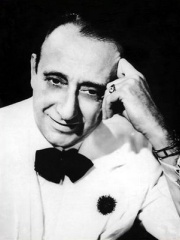
10. Juan d'Arienzo (1900 - 1976)
With an HPI of 58.64, Juan d'Arienzo is the 10th most famous Argentinean Musician. His biography has been translated into 16 different languages.
Juan d'Arienzo (December 14, 1900 – January 14, 1976) was an Argentine tango musician, also known as "El Rey del Compás" (King of the Beat). He was a violinist, band leader, and composer. He was the son of Italian immigrants and used more modern arrangements and instrumentation; his popular group produced hundreds of recordings. His first memorable performance was in 1919 at the Nacional theater during the comic play by Alberto Novión, El cabaret Montmartre. He received the nickname Rey del Compás (King of the Beat), from Príncipe Cubano, at the Florida cabaret when he was replacing Osvaldo Fresedo. He said: "Mine was always a tough orchestra, with a very swinging, much nervous, vibrant beat. And it was that way because tango, for me, has three things: beat, impact and nuances. An orchestra ought to have, above all, life. That is why mine lasted more than fifty years. And when the Prince gave me that title, I thought that it was OK, that he was right." His music is played often at milongas in Buenos Aires. His recordings were accompanied by singers: Alberto Echagüe, Armando Laborde, Héctor Maure, Jorge Valdez, Alberto Reynal, Antonio Prieto, Carlos Casares, Carlos Dante, Enrique Carbel, Francisco Fiorentino, Horacio Palma, Héctor Millán, Mario Bustos, Juan Carlos Lamas, Libertad Lamarque, Mercedes Serrano, Raquel Notar, Osvaldo Ramos, Roberto Lemos and Walter Cabral. He recorded more than 1000 tangos, milongas and fast valses, wrote lyrics for 3 tangos, composed 46 tangos. He is interred in the La Chacarita Cemetery in Buenos Aires, Argentina.
People
Pantheon has 16 people classified as Argentinean musicians born between 1900 and 1981. Of these 16, 9 (56.25%) of them are still alive today. The most famous living Argentinean musicians include Martha Argerich, Chris de Burgh, and Gustavo Santaolalla. The most famous deceased Argentinean musicians include Lalo Schifrin, Gato Barbieri, and Osvaldo Pugliese.
Living Argentinean Musicians
Go to all RankingsMartha Argerich
1941 - Present
HPI: 74.49
Chris de Burgh
1948 - Present
HPI: 67.30
Gustavo Santaolalla
1951 - Present
HPI: 65.61
Charly García
1951 - Present
HPI: 60.24
José Cura
1962 - Present
HPI: 57.74
Dominic Miller
1960 - Present
HPI: 55.81
Fito Páez
1963 - Present
HPI: 52.61
Paz Lenchantin
1973 - Present
HPI: 48.25
Sol Gabetta
1981 - Present
HPI: 45.77
Deceased Argentinean Musicians
Go to all RankingsLalo Schifrin
1932 - 2025
HPI: 67.00
Gato Barbieri
1932 - 2016
HPI: 63.07
Osvaldo Pugliese
1905 - 1995
HPI: 59.74
Aníbal Troilo
1914 - 1975
HPI: 59.67
Gustavo Cerati
1959 - 2014
HPI: 58.84
Juan d'Arienzo
1900 - 1976
HPI: 58.64
Enrique Santos Discépolo
1901 - 1951
HPI: 56.59
Overlapping Lives
Which Musicians were alive at the same time? This visualization shows the lifespans of the 7 most globally memorable Musicians since 1700.

